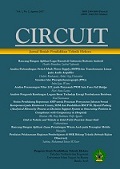Perancangan Aplikasi Analisis Saham Menggunakan Metode Rate Of Change
DOI:
https://doi.org/10.22373/crc.v1i2.774Keywords:
stock, technical indicator, Rate of Change, Zero-line Crossing SignalsAbstract
Stock is the most popular method today for investing and offers a lot of profit. The profit came from the difference between the prices when you buy it and when you sell it. Even though, the risk for investing using stock is very big. That is why stock investment must be done with correct analysis to maximize the profit and to avoid loss.One of methods for analyzing stock price movement is technical analysis. Technical analysis is a method which is based on stock price movement in the past time. One of popular technical analysis method is Rate of Change. The main concept is to compare current closing price with the closing price x-times periods ago. Using this method, stock broker will know the pace at which price is changing. Tracking the rate of the change of price can confirm trends and forewarn of market reversals. In this final project, I’ve tried to study the process of technical analysis using Rate of Change method, and then I developed software to implement this method. In the early phase, I studied some literature which is related to theories of stock market and technical analysis. After that I did some analyses which involve the analysis of how Rate of Change method works and functional specifications of the software which I would develop. Based on the results of the analysis, I did the design process. The purpose of Rate of Change test is to examine the accuracy of this method on detecting trade signals. And then this final project closed with the conclusion and suggestion for future development. Key Words:Downloads
Published
2016-01-02
Issue
Section
Articles
License
Authors who publish in CIRCUIT: Jurnal Ilmiah Pendidikan Teknik Elektro agree to the following terms:
- Authors retain copyright and grant the journal right of first publication with the work licensed under a Creative Commons Attribution-ShareAlike 4.0 International License (CC BY-SA 4.0) that allows others to share and adapt the work with an acknowledgement of the authorship and initial publication in this journal
- Authors are able to enter into separate, additional contractual arrangements for the non-exclusive distribution of the journal's published version of the work (e.g., post it to an institutional repository or publish it in a book), with an acknowledgment of its initial publication in this journal.
- Authors are permitted and encouraged to post their work online (e.g., in institutional repositories or on their website) prior to and during the submission process, as it can lead to productive exchanges, as well as earlier and greater citation of published work. (See The Effect of Open Acces)

